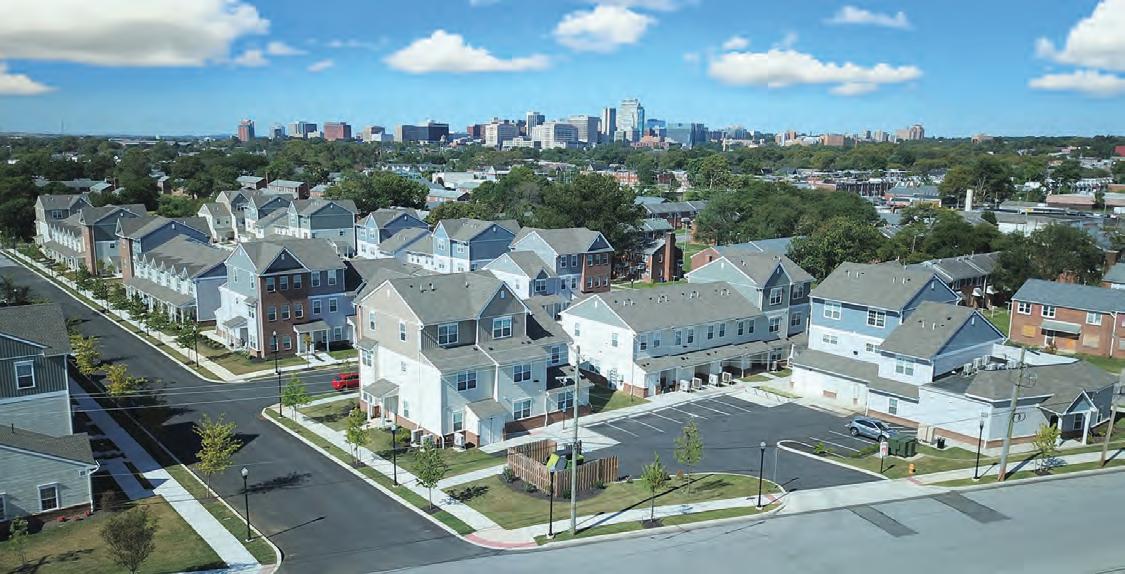
4 minute read
Keep the Pressure On
Continuing to focus on streamlining the permitting and development timelines
BY JEFF DISABATINO
WE HAVE ALL HEARD THE PHRASE, “The squeaky wheel gets the grease,” and in the case of the project permitting and development process, this phrase often applies. Development projects frequently receive hundreds of comments either in support of or in opposition to them as they proceed through the required review and comment period. Such varying viewpoints are a healthy part of the process and often lead to a better outcome. Having consistent, fact-based recommendations with supporting data will increase the likelihood that project stakeholders take notice, especially if they are received from multiple parties.
Applying this approach to improve the overall permitting process throughout the state should be an immediate priority for business leaders and development industry stakeholders. Governor Meyer’s Executive Order #4, which establishes a working group to develop and implement strategies to streamline the permitting and licensing timeline, provides parties with a meaningful opportunity to be the “squeaky wheel.” While the executive order mainly focuses on permitting for affordable housing, it is also a chance for stakeholders to be laser-focused on improving the overall permitting process, which many businesses cite as their number one frustration when choosing to locate or expand in Delaware.
Since the need to streamline the permitting and development timeline is not a new or unknown concern, it is important to review and refresh previously prepared suggestions. One such example is the Delaware Business Roundtable’s Ready in Six initiative and the progress that has been made since its launch in late 2019. The goal of this initiative was to improve Delaware’s competitiveness by reducing the timeline for permit approval from 24 months to approximately six months. Of the four-bill package introduced during the 2023 legislative session, two bills (HB 102 and HB 104) were signed into law in June 2023. Providing specific examples of projects that have benefited from these laws would help strengthen the case for further permitting reform and show the data behind why efforts such as this are important to the economic well-being of the state.
While it may seem daunting to compile or find the data needed to bolster calls for improvement in the permitting process, reports released by government agencies can provide this information. One example is the annual report issued by the Office of State Planning Coordination, which includes a wealth of data on permit activity reported by the state, counties, and 57 municipalities responsible for reviewing and issuing building permits. This report also analyzes trends in permitting across the state and provides recommendations for future planning activities. Using this data to generate meaningful, constructive comments about the permitting process is an easy way for business community stakeholders to engage with the working group and legislators regarding improvements to the permitting process.
Now that Governor Meyer’s executive order has established a working group that includes all of these agencies, the time is ripe to analyze the development and permitting process and identify ways to streamline the timeline from application to putting a shovel in the ground.
While the Office of State Planning Coordination’s 2024 annual report is fairly comprehensive, one item missing from its list of 2025 recommendations is the need to optimize the permitting process. Even though the business community has repeatedly emphasized the need for a more efficient permitting process, such commentary has yet to result in meaningful action within the agencies responsible for reviewing and approving permits. Now that Governor Meyer’s executive order has established a working group that includes all of these agencies, the time is ripe to analyze the development and permitting process and identify ways to streamline the timeline from application to putting a shovel in the ground. Identifying and understanding the bottlenecks in the process and then finding ways to allocate resources and simplify the process should be well within reach with all stakeholders engaged.
Maintaining momentum for improvements in the state permitting process—created through the most recent election cycle—should remain a top priority for both government officials and businesses. We need to be the “squeaky wheel,” armed with plenty of data and specific examples, if we want to help improve this process. We need to be a voice for balanced, strategic approaches that ensure predictable timelines and outcomes. We need to develop projects that support stronger communities and smart growth. We must also ensure that a diverse range of stakeholders contributes to this improvement process so that it incorporates as many great ideas as possible. The opportunities for progress are within reach.
Jeff DiSabatino is vice president of construction at DiSabatino Construction Company.










